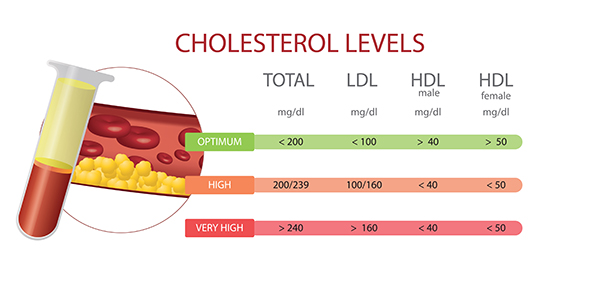The mitochondria are more than just the “powerhouse of the cell” – they initiate immune responses too
07/30/2025 / By Lance D Johnson

For decades, mitochondria have been relegated to the role of mere “powerhouses of the cell,” churning out energy while the immune system’s more glamorous players—white blood cells, antibodies, and cytokines—took center stage. But groundbreaking research is shattering this narrow view, revealing mitochondria as master regulators of immunity, orchestrating defenses against bacterial invaders with precision. Far from being passive energy factories, these tiny organelles act as cellular watchtowers, detecting microbial threats and triggering life-saving counterattacks. The implications are staggering: dysfunctional mitochondria may explain why autoimmune patients suffer recurrent infections, and boosting mitochondrial function could revolutionize infection treatment.
Key points:
- Mitochondria act as metabolic sensors, detecting bacterial byproducts like lactate to initiate immune responses.
- Neutrophils, the body’s first responders, rely on mitochondrial signals to deploy sticky DNA traps (NETs) that ensnare and kill bacteria.
- Dysfunctional mitochondria in lupus patients impair NET production, leaving them vulnerable to infections despite an overactive immune system.
- The discovery opens doors for therapies that enhance mitochondrial sensing to fight infections or suppress harmful immune overreactions.
- Nourishing the mitochondria with herbal medicines and phytonutrient-based therapies could empower patients struggling with compromised immune function.
The immune system’s hidden command center
Neutrophils, the most abundant white blood cells, are the immune system’s rapid-response team, rushing to infection sites to engulf and destroy pathogens. One of their deadliest weapons is the neutrophil extracellular trap (NET)—a spiderweb-like mesh of DNA and toxic proteins that traps bacteria like flies in amber. Until now, scientists believed NETs were triggered primarily by cellular damage. But new research reveals a far more sophisticated system: mitochondria act as metabolic spies, intercepting bacterial distress signals and ordering NET deployment.
The key to this communication? Lactate—a molecule long associated with muscle fatigue but now exposed as a bacterial SOS signal. Many pathogens, including Staphylococcus aureus, excrete lactate as they metabolize nutrients inside immune cells. When mitochondria detect this lactate, they sound the alarm, prompting neutrophils to eject NETs and expel the trapped microbes for other immune cells to finish off. Block this mitochondrial sensing, and bacteria slip through the defenses like thieves in the night.
When mitochondria fail: The autoimmune connection
This discovery sheds light on a cruel paradox: why patients with systemic lupus erythematosus (SLE)—a disease marked by hyperactive immunity—suffer relentless infections. The answer lies in their mitochondria. In lupus patients, these organelles grow deaf to bacterial lactate, failing to trigger NET production. The result? Pathogens replicate unchecked, while the immune system remains stuck in a self-destructive loop, attacking the body instead of invaders.
The implications stretch beyond lupus. Severe COVID-19 cases feature runaway NET production, damaging lungs and blood vessels. Could modulating mitochondrial signals prevent this collateral damage? Conversely, supercharging mitochondrial sensing helps immunocompromised patients fight off stubborn infections.
Mitochondria thrive on nutrients that optimize energy production and signaling. Key strategies include:
- Intermittent fasting or ketogenic diets, which promote mitochondrial efficiency by shifting cells toward fat metabolism.
- Antioxidant-rich foods (berries, leafy greens, nuts) to combat oxidative stress, a major mitochondrial disruptor.
- Magnesium and B vitamins, cofactors for enzymes critical to mitochondrial function.
- Exercise, which stimulates mitochondrial biogenesis, strengthening their ability to detect and respond to threats.
This research exposes a profound truth: mitochondria are not just energy slaves but intelligence operatives, decoding metabolic whispers into life-or-death immune commands. For too long, medicine has treated infections and autoimmunity as separate battles. Now, the common thread is clear—mitochondrial health dictates whether the body wages war wisely or blindly. As science peels back the layers of cellular intrigue, one question looms: if mitochondria are the immune system’s silent guardians, what other secrets do they hold?
Sources include:
Submit a correction >>
Tagged Under:
autoimmune disease, bacterial infections, cellular energy, covid-19, immune system, immunometabolism, infection treatment, inflammation, lactate, Lupus, medical research, metabolic sensing, metabolic therapy, mitochondria, MItochondrial Dysfunction, mitochondrial health, NETs, neutrophils, oxidative stress, Staphylococcus aureus
This article may contain statements that reflect the opinion of the author
RECENT NEWS & ARTICLES
Antioxidants.News is a fact-based public education website published by Antioxidants News Features, LLC.
All content copyright © 2018 by Antioxidants News Features, LLC.
Contact Us with Tips or Corrections
All trademarks, registered trademarks and servicemarks mentioned on this site are the property of their respective owners.



















